#southwest Pakistan
Text
ಭೀಕರ ಅಪಘಾತ ಕಂದಕಕ್ಕೆ ಬಸ್ ಉರುಳಿ 19 ಮಂದಿ ಸಾವು; ಹಲವರು ಗಂಭೀರ
ಭೀಕರ ಅಪಘಾತ ಕಂದಕಕ್ಕೆ ಬಸ್ ಉರುಳಿ 19 ಮಂದಿ ಸಾವು; ಹಲವರು ಗಂಭೀರ
ಇಸ್ಲಾಮಾಬಾದ್ : ಚಾಲಕನ ನಿಯಂತ್ರಣ ತಪ್ಪಿ ಬಸ್ಸೊಂದು ಕಂದಕಕ್ಕೆ ಉರುಳಿ 19 ಮಂದಿ ಸಾವನ್ನಪ್ಪಿರುವ ಭೀಕರ ಘಟನೆ ಪಾಕಿಸ್ತಾನದ ಬಲೂಚಿಸ್ತಾನ್ ನಲ್ಲಿ ಭಾನುವಾರ ( ಜು.3) ರಂದು ನಡೆದಿದೆ.
ಇಸ್ಲಾಮಾಬಾದ್ ನಿಂದ ಕ್ವೆಟ್ಟಾಕ್ಕೆ ತೆರಳುತ್ತಿದ್ದ ಬಸ್ ನಲ್ಲಿ 30 ಕ್ಕೂ ಹೆಚ್ಚಿನ ಜನರು ಪ್ರಯಾಣಿಸುತ್ತಿದ್ದರು. ಕ್ವೆಟ್ಟಾಕ್ಕೆ ಬರುವಾಗ ಬಸ್ ಒಮ್ಮೆಗೆ ಚಾಲಕನ ನಿಯಂತ್ರಣ ತಪ್ಪಿ, ಒಂದು ಕಡೆ ವಾಲಿ ಆಳವಾದ ಕಂದಕಕ್ಕೆ ಉರುಳಿ ಹಲವು ಪಲ್ಟಿಯಾದ ಪರಿಣಾಮ ಈ ಘಟನೆ ನಡೆದಿದೆ.
ಒಟ್ಟು 19 ಮಂದಿ…
View On WordPress
#19 People Passes Away#bus falls into ravine#Kannadanews#Kannadapapers#southwest Pakistan#udayavanipaper#ಇಸ್ಲಾಮಾಬಾದ್
0 notes
Text
Where can I find Free Palestine protests and Ceasefire protests?
A super international and continually updated list of actions can be found at Samidoun: Palestinian Prisoner Solidarity Network's:
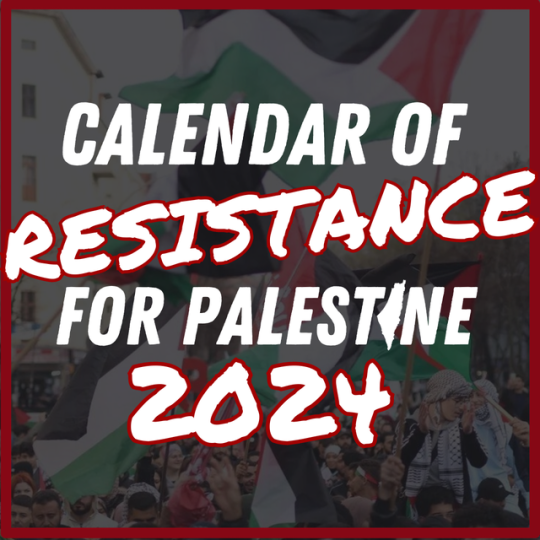
Calendar of Resistance for Palestine 2024
They list events by date, then alphabetically by country, then by city - and it's common for them to have dozens of actions listed for a single date, especially on the weekends.
The United States especially often has 40+ events on a single day, especially on the weekends.
Events are posted with links to the event info posted by whoever's hosting the vast majority of the time.
Look blow the read-more for a list of many of the countries that have been on this protest calendar, in alphabetical order, since I know so many websites/lists of actions are country-specific
*Obviously this isn't the only good source of listings for protest events - there are many others. This is by far the biggest/most international roundup I've found, though, so I started with this. If you know another good place for finding ceasefire protests/events, please feel free to add it in the notes, bc I'm planning to put a bigger roundup together once I find enough other sites
Countries that Samidoun has listed/does list protests for include (in alphabetical order):
North America:
United States
Canada
Mexico
Puerto Rico (listed separately in anti-colonial solidarity)
Hawai'i (listed separately in anti-colonial solidarity)
Europe:
Austria
Belgium
Bulgaria
Denmark
England
Finland
France
Germany
Greece
Hungary
Iceland
Ireland
Italy
Netherlands
Norway
Portugal
Romania
Scotland
Serbia
Spain
Sweden
Switzerland
Wales
SWANA Region (Southwest Asia/North Africa)*:
Bahrain
Iraq
Jordan
Kuwait
Lebanon
Palestine
Tunisia
Turkiye (Turkey)
*Samidoun notes that "We know that these events are mainly international and that the Arab people are marching everywhere for Palestine – we will be honored to add more Arab events whenever we are informed!"
Asia:
Bangladesh
India
Indonesia
Japan
Malaysia
Maldives
Pakistan
South Korea
Africa:
Kenya
Mauritius
Nigeria
South Africa
Tanzania
Tunisia
*Duplicating North African countries (well, Tunisia) here from the SWANA list btw
South America:
Brazil
Colombia
Chile
Peru
Venezuela
Australia and Oceania:
Aotearoa (New Zealand)
Australia
#reminder that “palestine” and “cw war” are the tags for all of my posts related to palestine#and that I only post relatively positive news about progress toward peace and resistance actions and the like#btw do NOT mess around in the notes with islamophobia OR antisemitism#neither are even remotely acceptable#palestine#cw war#free palestine#free gaza#israel#middle east#gaza#palestinian genocide#genocide#cw genocide#nakba#second nakba#ceasefire#palestine genocide#ceasefire now#palestine protest#gaza protests#gaza strip#gaza genocide#war crimes#ethnic cleansing#colonialism#anti zionisim
3K notes
·
View notes
Text
Countries that are no more: Achaemenid Empire (550BC-330BC)
It was not the first empire of Iranian peoples, but it arose as probably the greatest in terms of influence and became the measure by which all subsequent Iranian empires tended to compare themselves and its influence on culture, government & civil infrastructure would influence others beyond the span of its territory and the span of time. This is the Achaemenid Empire.
Name: In Old Persian it was known as Xšāça or the "The Kingdom or the Empire", it was named the Achaemenid Empire by later historians. Named after the ruling dynasty established by its founder Cyrus the Great who cited the name of his ancestor Haxāmaniš or Achaemenes in Greek as progenitor of the dynasty. It is sometimes also referred to as the First Persian Empire. The Greeks simply referred to it as Persia, the name which stuck for the geographic area of the Iranian plateau well into the modern era.
Language: Old Persian & Aramaic were the official languages. With Old Persian being an Iranian language that was the dynastic language of the Achaemenid ruling dynasty and the language of the Persians, an Iranian people who settled in what is now the southwestern Iranian plateau or southwest Iran circa 1,000 BC. Aramaic was a Semitic language that was the common and administrative language of the prior Neo-Assyrian & Neo-Babylonian Empires which centered in Mesopotamia or modern Iraq, Syria & Anatolian Turkey. After the Persian conquest of Babylon, the use of Aramaic remained the common tongue within the Mesopotamian regions of the empire, eventually becoming a lingua franca across the land. As the empire spread over a vast area and became increasingly multiethnic & multicultural, it absorbed many other languages among its subject peoples. These included the Semitic languages Akkadian, Phoenician & Hebrew. The Iranian language of Median among other regional Iranian languages (Sogdian, Bactrian etc). Various Anatolian languages, Elamite, Thracian & Greek among others.
Territory: 5.5 million kilometers squared or 2.1 million square miles at its peak circa 500BC. The Achaemenid Empire spanned from southern Europe in the Balkans (Greece, Bulgaria, European Turkey) & northwest Africa (Egypt, Libya & Sudan) in the west to its eastern stretches in the Indus Valley (Pakistan) to parts of Central Asia in the northeast. It was centered firstly in the Iranian Plateau (Iran) but also held capitals in Mesopotamia (Iraq). Territory was also found in parts of the Arabian Peninsula & the Caucausus Mountains.
Symbols & Mottos: The Shahbaz or Derafsh Shahbaz was used as the standard of Cyrus the Great, founder of the empire. It depicts a bird of prey, typically believed to be a falcon or hawk (occasionally an eagle) sometimes rendered gold against a red backdrop and depicts the bird holding two orbs in its talons and adorned with an orb likewise above its head. The symbolism was meant to depict the bird guiding the Iranian peoples to conquest and to showcase aggression & strength coupled with dignity. The imperial family often kept falcons for the pastime of falconry.
Religion: The ancient Iranian religion of Zoroastrianism served as the official religion of the empire. It was adopted among the Persian elite & and had its unique beliefs but also helped introduce the concept of free-will among its believers, an idea to influence Judaism, Christianity & Islam in later centuries. Despite this official religion, there was a tolerance for local practices within the subject regions of the empire. The ancient Mesopotamian religion in Babylon & Assyria, Judaism, the Ancient Greek & Egyptian religions & Vedic Hinduism in India was likewise tolerated as well. The tolerance of the Achaemenids was considered a relative hallmark of their dynasty from the start. Famously, in the Old Testament of the Bible it was said that it was Cyrus the Great who freed the Jews from their Babylonian captivity and allowed them to return to their homeland of Judea in modern Israel.
Currency: Gold & silver or bimetallic use of coins became standard within the empire. The gold coins were later referred to as daric and silver as siglos. The main monetary production changes came during the rule of Darius I (522BC-486BC). Originally, they had followed the Lydian practice out of Anatolia of producing coins with gold, but the practice was simplified & refined under the Achaemenids.
Population: The estimates vary ranging from a low end of 17 million to 35 million people on the upper end circa 500BC. The official numbers are hard to determine with certainty but are generally accepted in the tens of millions with the aforementioned 17-35 million being the most reasonable range based on available sources.
Government: The government of the Achaemenid Empire was a hereditary monarchy ruled by a king or shah or later referred to as the ShahanShah or King of Kings, this is roughly equivalent to later use of the term Emperor. Achaemenid rulers due the unprecedented size of their empire held a host of titles which varied overtime but included: King of Kings, Great King, King of Persia, King of Babylon, Pharaoh of Egypt, King of the World, King of the Universe or King of Countries. Cyrus the Great founded the dynasty with his conquest first of the Median Empire and subsequently the Neo-Babylonians and Lydians. He established four different capitals from which to rule: Pasargadae as his first in Persia (southwest central Iran), Ecbatana taken from the Medians in western Iran's Zagros Mountains. The other two capitals being Susa in southwest Iran near and Babylon in modern Iraq which was taken from the Neo-Babylonians. Later Persepolis was made a ceremonial capital too. The ShahanShah or King of Kings was also coupled with the concept of divine rule or the divinity of kings, a concept that was to prove influential in other territories for centuries to come.
While ultimate authority resided with the King of Kings and their bureaucracy could be at times fairly centralized. There was an expansive regional bureaucracy that had a degree of autonomy under the satrapy system. The satraps were the regional governors in service to the King of Kings. The Median Empire had satraps before the Persians but used local kings they conquered as client kings. The Persians did not allow this because of the divine reverence for their ShahanShah. Cyrus the Great established governors as non-royal viceroys on his behalf, though in practice they could rule like kings in all but name for their respective regions. Their administration was over their respective region which varied overtime from 26 to 36 under Darius I. Satraps collected taxes, acted as head over local leaders and bureaucracy, served as supreme judge in their region to settle disputes and criminal cases. They also had to protect the road & postal system established by the King of Kings from bandits and rebels. A council of Persians were sent to assist the satrap with administration, but locals (non-Persian) could likewise be admitted these councils. To ensure loyalty to the ShahanShah, royal secretaries & emissaries were sent as well to support & report back the condition of each satrapy. The so called "eye of the king" made annual inspections of the satrapy to ensure its good condition met the King of Kings' expectations.
Generals in chief were originally made separate to the satrap to divide the civil and military spheres of government & were responsible for military recruitment but in time if central authority from the ShahanShah waned, these could be fused into one with the satrap and general in chiefs becoming hereditary positions.
To convey messages across the widespread road system built within the empire, including the impressive 2,700 km Royal Road which spanned from Susa in Iran to Sardis in Western Anatolia, the angarium (Greek word) were an institution of royal messengers mounted on horseback to ride to the reaches of the empire conveying postage. They were exclusively loyal to the King of Kings. It is said a message could be reached to anywhere within the empire within 15 days to the empire's vast system of relay stations, passing message from rider to rider along its main roads.
Military: The military of the Achaemenids consisted of mostly land based forces: infantry & cavalry but did also eventually include a navy.
Its most famous unit was the 10,000-man strong Immortals. The Immortals were used as elite heavy infantry were ornately dressed. They were said to be constantly as 10,000 men because for any man killed, he was immediately replaced. Armed with shields, scale armor and with a variety of weapons from short spears to swords, daggers, slings, bows & arrows.
The sparabara were the first line of infantry armed with shields and spears. These served as the backbone of the army. Forming shield walls to defend the Persian archers. They were said to ably handle most opponents and could stop enemy arrows though their shields were vulnerable to enemy spears.
There was also the takabara light infantry and though is little known of them it seems they served as garrison troops and skirmishers akin to the Greek peltast of the age.
The cavalry consisted of four distinct groups: chariot driven archers used to shoot down and break up enemy formations, ideally on flat grounds. There was also the traditional horse mounted cavalry and also camel mounted cavalry, both served the traditional cavalry functions and fielded a mix of armor and weapons. Finally, there was the use of war elephants which were brought in from India on the empire's eastern reaches. These provided archers and a massive way to physically & psychologically break opposing forces.
The navy was utilized upon the empire's reaching the Mediterranean and engaged in both battles at sea and for troop transport to areas where troops needing deploying overseas, namely in Greece.
The ethnic composition of Achaemenid military was quite varied ranging from a Persian core with other Iranian peoples such as the Medians, Sogdian, Bactrians and Scythians joining at various times. Others including Anatolians, Assyrians, Babylonians, Anatolians, Indians, Arabs, Jews, Phoenicians, Thracians, Egyptians, Ethiopians, Libyans & Greeks among others.
Their opponents ranged from the various peoples they conquered starting with the Persian conquest of the Medians to the Neo-Babylonians, Lydians, Thracians, Greeks, Egyptians, Arabs & Indians and various others. A hallmark of the empire was to allow the local traditions of subjugated areas to persist so long as garrisons were maintained, taxes were collected, local forces provided levies to the military in times of war, and they did not rebel against the central authority.
Economy: Because of the efficient and extensive road system within the vast empire, trade flourished in a way not yet seen in the varied regions it encompassed. Tax districts were established with the satrapies and could be collected with relative efficiency. Commodities such as gold & jewels from India to the grains of the Nile River valley in Egypt & the dyes of the Phoenicians passed throughout the realm's reaches. Tariffs on trade & agricultural produce provided revenue for the state.
Lifespan: The empire was founded by Cyrus the Great circa 550BC with his eventual conquest of the Median & Lydian Empires. He started out as Cyrus II, King of Persia a client kingdom of the Median Empire. His reign starting in 559BC. Having overthrown and overtaken the Medians, he turned his attention Lydia and the rest of Anatolia (Asia Minor). He later attacked the Eastern Iranian peoples in Bactria, Sogdia and others. He also crossed the Hindu Kush mountains and attacked the Indus Valley getting tribute from various cities.
Cyrus then turned his attention to the west by dealing with the Neo-Babylonian Empire. Following his victory in 539BC at the Battle of Opis, the Persians conquered the Babylonia with relative quickness.
By the time of Cyrus's death his empire had the largest recorded in world history up to that point spanning from Anatolia to the Indus.
Cyrus was succeeded by his sons Cambyses II and Bardiya. Bardiya was replaced by his distant cousin Darius I also known as Darius the Great, whose lineage would constitute a number of the subsequent King of Kings.
Darius faced many rebellions which he put down in succession. His reign is marked by changes to the currency and the largest territorial expansion of the empire. An empire at its absolute zenith. He conquered large swaths of Egypt, the Indus Valley, European Scythia, Thrace & Greece. He also had exploration of the Indian Ocean from the Indus River to Suez Egypt undertaken.
The Greek kingdom of Macedon in the north reaches of the Hellenic world voluntarily became a vassal of Persia in order to avoid destruction. This would prove to be a fateful first contact with this polity that would in time unite the Greek-speaking world in the conquest of the Achaemenid Empire. However, at the time of Darius I's the reign, there were no early indications of this course of events as Macedon was considered even by other Greek states a relative backwater.
Nevertheless, the Battle of Marathon in 490BC halted the conquest of mainland Greece for a decade and showed a check on Persia's power in ways not yet seen. It is also regarded as preserving Classical Greek civilization and is celebrated to this day as an important in the annals of Western civilization more broadly given Classical Greece & in particular Athens's influence on western culture and values.
Xerxes I, son of Darius I vowed to conquer Greece and lead a subsequent invasion in 480BC-479BC. Xerxes originally saw the submission of northern Greece including Macedon but was delayed by the Greeks at the Battle of Thermopylae, most famously by Spartan King Leonidas and his small troop (the famed 300). Though the Persians won the battle it was regarded as a costly victory and one that inspired the Greeks to further resistance. Though Athens was sacked & burnt by the Persians, the subsequent victories on sea & land at Salamis & Plataea drove the Persians back from control over Greece. Though war would rage on until 449BC with the expulsion of the Persians from Europe by the Greeks.
However, the Greeks found themselves in a civil war between Athens & Sparta and Persia having resented the Athenian led coalition against their rule which had expelled them from Europe sought to indirectly weaken the Greeks by supporting Greek factions opposed to Athens through political & financial support.
Following this reversal of fortune abroad, the Achaemenid Empire not able to regain its foothold in Europe, turned inward and focused more on its cultural development. Zoroastrianism became the de-facto official religion of the empire. Additionally, architectural achievements and improvements in its many capitals were undertaken which displayed the empire's wealth. Artaxerxes II who reigned from 405BC-358BC had the longest reign of any Achaemenid ruler and it was characterized by relative peace and stability, though he contended with a number of rebellions including the Great Satraps Revolt of 366BC-360BC which took place in Anatolia and Armenia. Though he was successful in putting down the revolt. He also found himself at war with the Spartans and began to sponsor the Athenians and others against them, showcasing the ever dynamic and changing Greco-Persian relations of the time.
Partially for safety reasons, Persepolis was once again made the capital under Artaxerxes II. He helped expand the city and create many of its monuments.
Artaxerxes III feared the satraps could no longer be trusted in western Asia and ordered their armies disbanded. He faced a campaign against them which suffered some initial defeats before overcoming these rebellions, some leaders of which sought asylum in the Kingom of Macedon under its ruler Philip II (father of Alexander the Great).
Meanwhile, Egypt had effectively become independent from central Achaemenid rule and Artaxerxes III reinvaded in around 340BC-339BC. He faced stiff resistance at times but overcame the Egyptians and the last native Egyptian Pharaoh Nectanebo II was driven from power. From that time on ancient Egypt would be ruled by foreigners who held the title Pharaoh.
Artaxerxes III also faced rebellion from the Phoenicians and originally was ejected from the area of modern coastal Lebanon, Syria & Israel but came back with a large army subsequently reconquered the area including burning the Phoenician city of Sidon down which killed thousands.
Following Artaxerxes III's death his son succeeded him but a case of political intrigue & dynastic murder followed. Eventually Darius III a distant relation within the dynasty took the throne in 336BC hoping to give his reign an element of stability.
Meanwhile in Greece, due to the military reforms and innovations of Philip II, King of Macedon, the Greek speaking world was now unified under Macedon's hegemony. With Philip II holding the title of Hegemon of the Hellenic League, a relatively unified coalition of Greek kingdoms and city-states under Macedon premiership that formed to eventually invade Persia. However, Philip was murdered before his planned invasion of Asia Minor (the Achaemenid's westernmost territory) could commence. His son Alexander III (Alexander the Great) took his father's reforms and consolidated his hold over Greece before crossing over to Anatolia himself.
Darius III had just finished reconquering some rebelling vestiges of Egypt when Alexander army crossed over into Asia Minor circa 334BC. Over the course of 10 years Alexander's major project unfolded, the Macedonian conquest of the Persian Empire. He famously defeated Persians at Granicus, Issus and Gaugamela. The latter two battles against Darius III in person. He took the King of Kings family hostage but treated them well while Darius evacuated to the far eastern reaches of his empire to evade capture. He was subsequently killed by one of his relatives & satraps Bessus, whom Alexander eventually had killed. Bessus had declared himself King of Kings though this wasn't widely recognized and most historians regard Darius III, the last legitimate ShahanShah of Achaemenids.
Alexander had taken Babylon, Susa & Persepolis by 330BC and effectively himself was now ruler of the Persian Empire or at least its western half. In addition to being King of Macedon & Hegemon of the Hellenic League, he gained the titles King of Persia, Pharaoh of Egypt & Lord of Asia. Alexander would in time eventually subdue the eastern portions of the Achaemenid realm including parts of the Indus Valley before turning back to Persia and Babylon where he subsequently became ill and died in June 323BC at age 32. Alexander's intentions it appears were never to replace the Achaemenid government & cultural structure, in fact he planned to maintain and hybridize it with his native Greek culture. He was in fact an admirer of Cyrus the Great (even restoring his tomb after looting) & adopted many Persian customs and dress. He even allowed the Persians to practice their religion and had Persian and Greeks start to serve together in his army. Following his death and with no established successor meant the empire he established which essentially was the whole Achaemenid Empire's territory in addition to the Hellenic world fragmented into different areas run by his most trusted generals who established their own dynasties. The Asian territories from Anatolia to the Indus (including Iran and Mesopotamia) gave way to the Hellenic ruled Seleucid Empire while Egypt became the Hellenic ruled Ptolemaic Kingdom. The synthesis of Persian and Greek cultures continued in the Seleucid and Greco-Bactrian kingdoms of antiquity.
The Achaemenid Empire lasted for a little over two centuries (550BC-330BC) but it casted a long shadow over history. Its influence on Iran alone has persisted into the modern age with every subsequent Persian Empire claiming to be its rightful successor from the Parthian & Sasanian Empires of pre-Islamic Iran to the Safavids of the 16th-18th century and the usage of the title Shah until the last Shah's ejection from power in the 1979 Islamic Revolution. Even the modern Islamic Republic of Iran uses Achaemenid imagery in some military regiments and plays up its importance in tourism and museums as a source of pride to Persian (Farsi) & indeed Iranian heritage. Likewise, its form of governance and the pushing of the concept of divine rights of kings would transplant from its Greek conquerors into the rest of Europe along with various other institutions such as its road & mail system, tax collection & flourishing trade. Its mix of centralized & decentralized governance. Its religious & cultural tolerance of local regions even after their conquest would likewise serve as a template for other empires throughout history too. The Achaemenid Empire served as a template for vast international & transcontinental empires that would follow in its wake & surpass its size & scope of influence. However, it is worth studying for in its time, it was unprecedented, and its innovations so admired by the likes of Alexander the Great and others echo into the modern era.
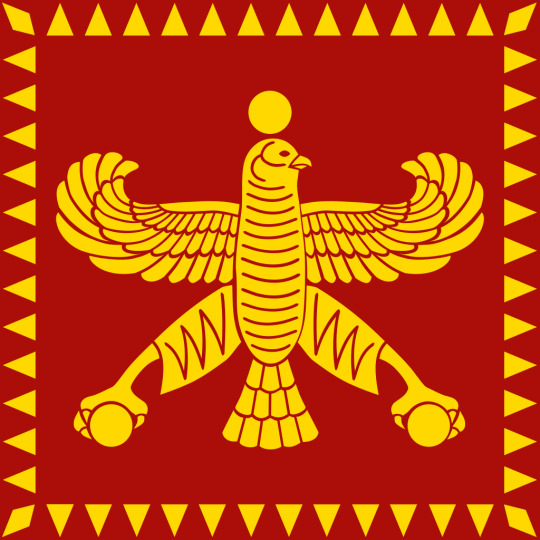
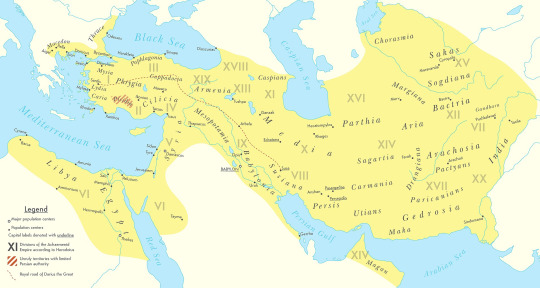


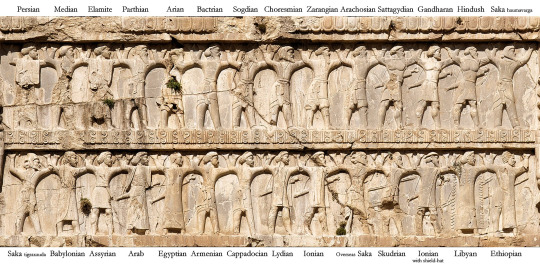
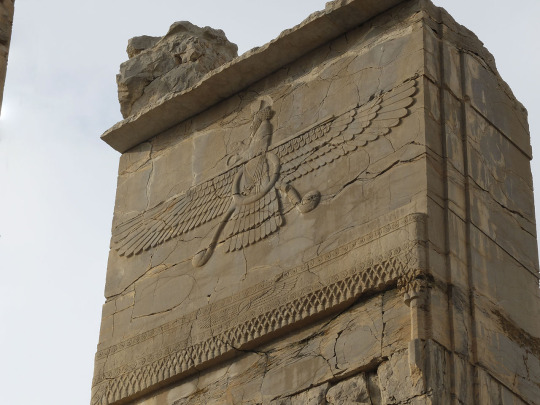




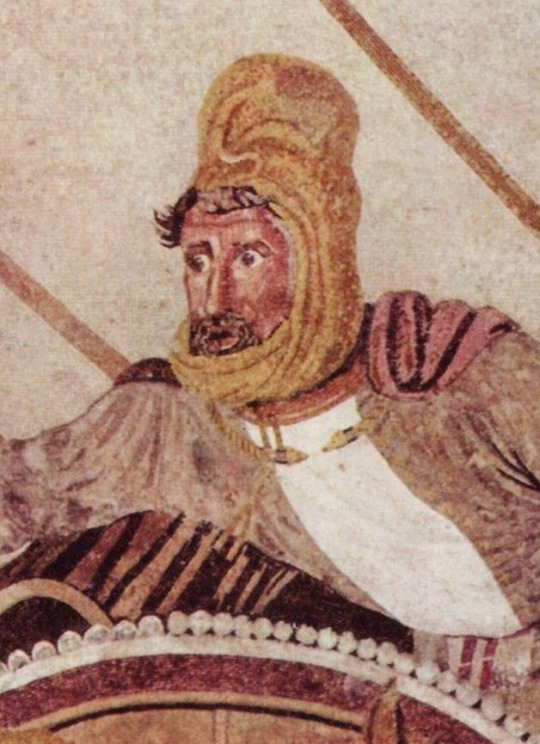
#military history#antiquity#iran#greece#ancient greece#classical greece#ancient ruins#ancient iran#ancient persia#achaemenid#persia#zoroastrianism#alexander the great#cyrus the great#xerxes#artwork#government#history#persian empire#ancient egypt
89 notes
·
View notes
Photo

Anbesa (Amharic)- Lion- (አንበሳ)
In Africa, the range of the lion originally spanned most of the central African rainforest zone and the Sahara desert. In the 1960s, it became extinct in North Africa, except in the southern part of Sudan.
In southern Europe and Asia, the lion once ranged in regions where climatic conditions supported an abundance of prey. In Greece, it was common as reported by Herodotus in 480 BC; it was considered rare by 300 BC and extirpated by AD 100. It was present in the Caucasus until the 10th century. It lived in Palestine until the Middle Ages, and in Southwest Asia until the late 19th century. By the late 19th century, it had been extirpated in most of Turkey. The last live lion in Iran was sighted in 1942 about 65 km (40 mi) northwest of Dezful, although the corpse of a lioness was found on the banks of the Karun river in Khūzestān Province in 1944. It once ranged from Sind and Punjab in Pakistan to Bengal and the Narmada River in central India
23 notes
·
View notes
Text
ISLAMABAD (AP) — Lightning and heavy rains have killed at least 49 people across Pakistan in the past three days, officials said Monday, as authorities in the country’s southwest declared a state of emergency.
Some deaths occurred when lightning struck farmers harvesting wheat. Rains caused dozens of houses to collapse in the northwest and in eastern Punjab province.
Arfan Kathia, a spokesman for the provincial disaster management authority, said 21 people had died in Punjab, where more rains were expected this week. Khursheed Anwar, a spokesman for the disaster management authority in northwestern Khyber Pakhtunkhwa province bordering Afghanistan, said 21 people died there.
Rain also lashed the capital, Islamabad, and killed seven people in southwestern Baluchistan province. Streets flooded in the northwestern city of Peshawar and in Quetta, the Baluchistan capital.
Prime Minister Shehbaz Sharif said in televised remarks that he had ordered authorities to provide relief aid. Pakistan’s water reservoirs would improve because of the rains, he said.
Rafay Alam, a Pakistani environmental expert, said such heavy April rainfall is unusual.
“Two years ago, Pakistan witnessed a heat wave in March and April and now we are witnessing rains and it is all of because of climate change, which had caused heavy flooding in 2022,” he said.
In 2022, downpours swelled rivers and at one point inundated one-third of Pakistan, killing 1,739 people. The floods also caused $30 billion in damage.
Meanwhile, heavy flooding from seasonal rains in Afghanistan killed 33 people and injured 27 others in three days, according to Abdullah Janan Saiq, the Taliban’s spokesman for the State Ministry for Natural Disaster Management.
More than 600 houses were damaged or destroyed while around 200 livestock died. The flooding also damaged large areas of agricultural land and more than 85 kilometers (53 miles) of roads, he said.
He said authorities in Afghanistan had provided aid to nearly 23,000 families, and that flash floods were reported in 20 of the country’s 34 provinces.
2 notes
·
View notes
Text


Flooding Along the Sutlej River in Punjab
Weeks of heavy monsoon rains flooded farmland and hundreds of villages along the Sutlej River in Pakistan and India in August 2023.
The pair of images above highlights flooding along the Sutlej River, near Firozpur in the Punjab region. The lower image shows water overtopping banks of the river on August 19. The top image shows the same region on June 16, before much of the flooding took place. Both images were acquired with the Operational Land Imager-2 (OLI-2) on Landsat 9.
The Sutlej River flows southwest from India into Pakistan. Although the state of Punjab in India received about average rainfall since June, according to India’s Meteorological Department, excess rain has fallen on Ladakh and Himachal Pradesh, to the north. Between June 1 and August 25, Ladakh received almost three times as much rain as normal.
According to ReliefWeb, over 200,000 people have been evacuated in Pakistan and several hundred villages have been inundated with floodwater since late June, the start of the monsoon season.
Water levels on the Sutlej at the Ganda Singh Wala village gauging station, 7 kilometers (4 miles) west of Firozpur, were “exceptionally high” on August 19, according to the Pakistan Meteorological Department. Pakistan’s chief meteorologist covering floods said the river level was at its highest in 35 years.
The summer monsoon, which occurs between June and September every year, brings South Asia much of its annual rainfall. It is vital for the millions of farmers in the region, but it can also bring floods and landslides that lead to evacuations.
More than 200 people have died in Pakistan in rain-related incidents since the monsoon season began in late June, according to Pakistan’s National Disaster Management Authority. Many areas of Pakistan are still recovering from the devastation of extreme monsoon rains in 2022, which flooded nearly one-third of the country and killed more than one thousand people.
NASA Earth Observatory images by Wanmei Liang, using Landsat data from the U.S. Geological Survey. Story by Emily Cassidy.
2 notes
·
View notes
Note
apologies if you’ve spoken ab this before but what are ur thoughts on the phrase “islamophobia?” i ask bc i’m not mena but i do have some issue with the phrase. for one, islam is a religion, and i don’t think people can be oppressed on the basis of their beliefs. islamophobia doesn’t exclusively target muslim people, from what i’ve seen it can target anyone from arab to south asian, because most “islamophobes” are really just racist and assume every person southwest of china is muslim. for two, it makes addressing the misogyny perpetuated by muslim males a constant “slippery slope,” because muslim culture/faith is so sacred because it’s not white (unlike christianity, where we are actually allowed to criticize their misogyny) so their beliefs about (typically mena) women have to be respected (thus implying mena women are less deserving of liberation from religious misogyny literally just because they’re not white). it obfuscates the issue that the religion is inherently misogynistic, and whether women “consensually” adhere to its standards for womanhood doesn’t change the fact that it necessitates the belief that women are inferior. but also, i’m not mena so idk if it’s really my place lol.
ive def spoken about this before so ill try to find the other stuff i wrote on it and link it later here !! 
i don’t think people face oppression on the basis of their beliefs, but i think in the west, esp since islam is racialised, they can face oppression on the basis of being identified as a member of a religious group (regardless of their actual beliefs). there’s numerous statistics and studies showing high rates of hate crimes against ppl specifically bc they’re muslim and such hate crimes often target women bc they’re the group of muslims that are often most identifiable due to hijab. as a result, a huge portion islamophobic hate crimes aren’t even racially motivated but in fact motivated by being identifiably muslim via being a hijabi and thus most are also misogynistic attacks in nature.

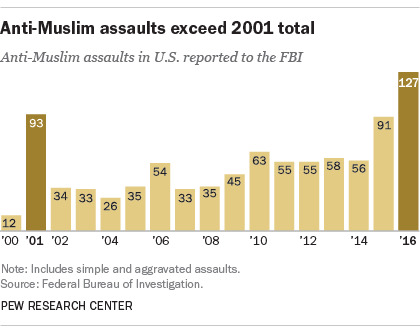

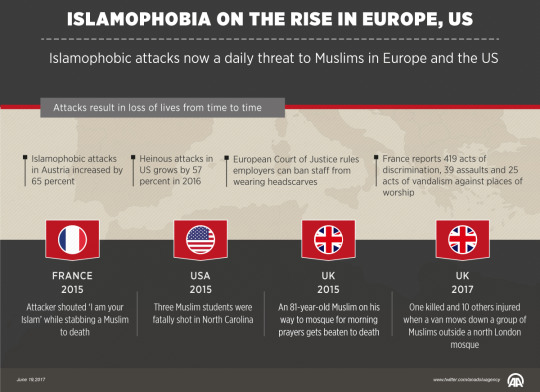
such attacks even impact white muslims which is why i believe that while its often a racialised form of prejudice, it isn’t always to do with race.
also there’s some implications in ur msg that muslims are typically MENA, which isn’t true, or that south asia & islam are mutually exclusive which also isn’t true. iirc pakistan, afghanistan, and bangladesh are all muslim-majority south asian countries, and islam is prominent in a lot of south asia:

i mean most of MENA is muslim but we also ultimately only make up like 20% of muslims overall. but you’re right that sometimes it’s purely racism and non-muslim south asians are assumed to be muslim by ignorant racists and attacked on that basis. in that case id say they’re more racist than islamophobic but clearly they’re not particularly keen of muslims either.
for your last point, i don’t think talking about misogyny among muslim men or misogyny in islam or criticising islam the same way u criticise any other religion like christianity is islamophobic. i think some religious muslims liked to misuse the term and argue criticism of the religion and misogyny towards women is islamophobic bc it gives them a shield to hide behind. many moc will also argue the same, that criticising their misogyny without being racist is still racist somehow. oppressors will find a way to coopt terms referring to prejudice & discrimination & instead use it as a silencing tactic. i know saudi argued many times that criticism towards them is islamophobic as if anyone in saudi faces discrimination for being muslim💀 but them misusing the term doesn’t mean there isn’t any genuine hatred towards muslims and anti-muslim prejudice and discrimination in the west and other non-muslim countries like india for example
13 notes
·
View notes
Text
Heatwaves will make parts of Africa and Asia uninhabitable within decades, new report warns
4 min read Published 11 October 2022 at 7:27am Source: AFP
The report said extreme heat was a "silent killer", claiming thousands of lives each year, and the dangers were set to grow at an "alarming rate" due to climate change.
Heatwaves will become so extreme in certain regions of the world within decades that human life there will be unsustainable, the United Nations and the Red Cross said Monday.
Heatwaves are predicted to "exceed human physiological and social limits" in the Sahel, the Horn of Africa and south and southwest Asia, with extreme events triggering "large-scale suffering and loss of life", the organisations said.
Heatwave catastrophes this year in countries like Somalia and Pakistan foreshadow a future with deadlier, more frequent, and more intense heat-related humanitarian emergencies, they warned in a joint report.
10 notes
·
View notes
Text

A turtle is seen underwater in the Kizılirmak River, Turkey Photograph: Anadolu Agency/Getty Images
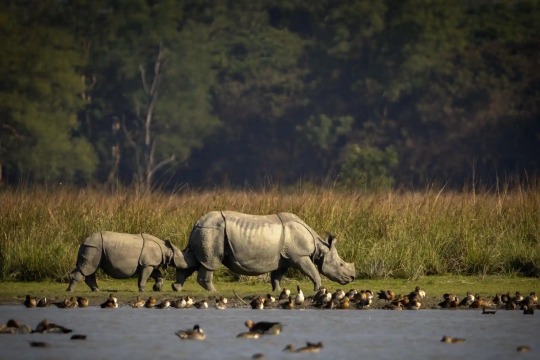
A one-horned rhinoceros mother and calf graze at the Pobitora wildlife sanctuary on the outskirts of Guwahati, India. The sanctuary is known for its Indian one-horned rhino population. Photograph: Anupam Nath/AP

A snow leopard – a species under top-level protection in China – is released into the wild in Lhünzhub County of Lhasa, southwest China’s Tibet Autonomous Region, months after it was rescued in the rural area of Lhasa. Photograph: Xinhua/REX/Shutterstock

Hundreds of bar-headed geese, which migrate from Tibet and Central Asia during winter, flock near the India-Pakistan border at Gharana village in Ranbir Singh Pura, India. Photograph: Channi Anand/AP
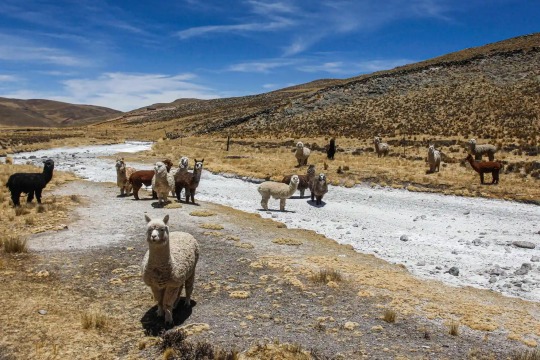
Alpacas are seen next to a dry stream in the Quechua community of Lagunillas in Puno, southern Peru. The harsh drought in the Peruvian Andes has caused the death of animals such as alpacas and affected crops and the economy of local communities. It has forced the Peruvian government to declare a 60-day emergency in 111 districts of the region. Photograph: Juan Carlos Cisneros/AFP/Getty Images
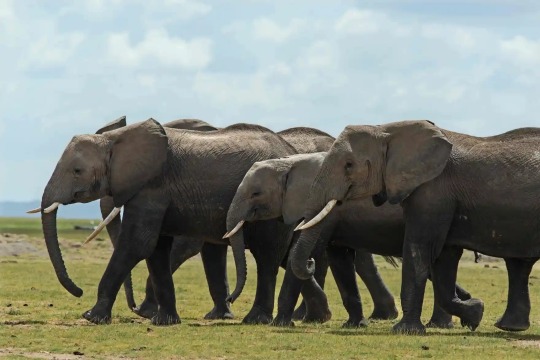
Elephants head towards hay delivered by Kenya Wildlife Services (KWS) ranger Josphat Wangigi (not seen) at the Amboseli National Park as feed-aid for forage-deprived herbivores hit hard by drought. In Kenya, the signs of the drought are everywhere. The earth is dry and cracked, animal bones lie along the trails and emaciated trees with yellowing leaves bear witness to the impact of the worst drought in 40 years. Photograph: Tony Karumba/AFP/Getty Images

A Cape buffalo feeds in what remains of a natural marsh at the Amboseli National Park, Kenya, the vast area hit hard by droughts that have wiped out pastures for the main herbivores. Photograph: Tony Karumba/AFP/Getty Images

Riyadh, Saudi Arabia! Crown Prince Mohammed Bin Salman poses with the visiting Chinese president, Xi Jinping. Photograph: Saudi Press Agency/Reuters

Mauna Loa, Hawaii! Molten bombs are thrown into the air by the lava fountains at Fissure 3 on the north-east rift zone of Mauna Loa. Fountains of lava and rivers of molten rock were spewing from the world’s biggest volcano, as the first eruption there in almost four decades showed no signs of abating. Photograph: D Downs/US Geological Survey/AFP/Getty Images

Al-Rayyan, Qatar! Morocco’s players celebrate at the end of the World Cup match against Spain at the Education City Stadium. Photograph: Glyn Kirk/AFP/Getty Images
3 notes
·
View notes
Text

Taiwan tracks 24 Chinese warplanes
One aircraft crossed the midline of the Taiwan Strait and 2 entered ADIZ
Diego Alves By Diego Alves 09/14/2022 - 15:00in Military, War Zones
A Shenyang J-16 about to land, during a military exercise with Russia.
The Ministry of National Defense reported that it tracked 24 aircraft and five Chinese military ships throughout the country until 5 p.m. on Wednesday (September 14).
One of the 24 aircraft crossed the midline of the Taiwan Strait and two entered the southwest sector of the Taiwan Air Defense Identification Zone (ADIZ), the Taiwanese ministry tweeted. The aircraft were a Shenyang J-16 fighter jet and a Shenyang J-11, and a Shaanxi Y-8 EW electronic warplane.

The military triggered Air Combat Patrol (CAP) aircraft, ships and ground-based air defense missile systems to monitor and respond to Chinese activities.
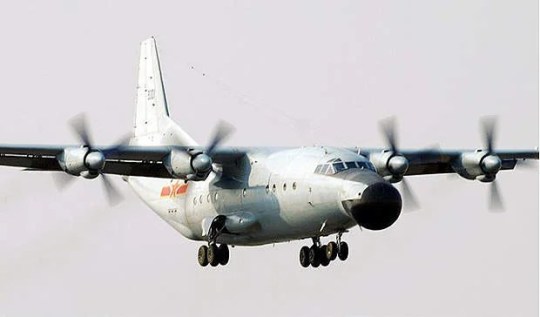
Shaanxi Y-8 EW approaches for landing. Illustrative image.
Since U.S. House Speaker Nancy Pelosi visited Taipei in early August, China has intensified its incursions into Taiwan's ADIZ while conducting large-scale military exercises along its coast, causing international concern about regional stability.
Tags: ChinaCold War - China x TaiwanShenyang J-11Shenyang J-16Taiwan
Previous news
Russian Mi-171A3 helicopter covers 800 km on the first interregional flight
Next news
USAF sends B-1Bs on the Arctic border to improve ACE practices
Diego Alves
Diego Alves
Related news
Pakistani Harbin Z-9C Haitun. Illustrative image.
HELICOPTERS
Pakistan Navy criticizes helicopters manufactured in China for maintenance problems
09/14/2022 - 17:00
COMMERCIAL
VIDEO: China's second amphibious AG600M 'Kunlong' aircraft completes the inaugural flight
09/14/2022 - 10:00
COMMERCIAL
China's C919 aircraft is expected to receive certification on September 19
09/13/2022 - 19:05
COMMERCIAL
VIDEO: Chinese firefighting aircraft AG600M performs its first amphibious flight
31/08/2022 - 12:00
VANT - UAV
Modernized CH-4 drone from China, with updated engine, performs inaugural flight
08/19/2022 - 14:00
WAR ZONES
Tensions between China and Taiwan increase with the visit of the President of the United States House
08/03/2022 - 14:00
homeMain PageEditorialsINFORMATIONeventsCooperateSpecialitiesadvertiseabout
Cavok Brazil - Digital Tchê Web Creation
Commercial
Executive
Helicopters
HISTORY
Military
Brazilian Air Force
Space
Specialities
Cavok Brazil - Digital Tchê Web Creation
2 notes
·
View notes
Text
A Hindu festival in southwest Pakistan brings life to the mountainous region
HINGLAZ, Pakistan (AP) — The ascent of steep mud volcanoes marks the start of religious rituals for Hindu pilgrims in southwestern Pakistan.
They climb hundreds of steps or clamber over rocks to reach the summit, throw coconuts and rose petals into the shallow crater, seek divine permission to visit the ancient cave temple of Hinglaj Mata, the focus of their three-day worship.
The dramatic…
View On WordPress
0 notes
Text

Devastating storms strike Pakistan: 39 killed by lightning and severe rains in the southwest.
Farmers harvesting wheat among the casualties.
Flash floods wreak havoc on power and transport.
As extreme weather events rise, the country faces ongoing climate challenges.
#PakistanWeather #ClimateCrisis #ExtremeWeather #Floods #EmergencyResponse
0 notes
Text
A bus carrying pilgrims crashes in southwest Pakistan, killing 17 people and injuring 16
QUETTA, Pakistan (AP) — A bus carrying pilgrims crashed into a deep ditch in southwest Pakistan, killing 17 people and injuring 16 others, officials said Thursday.
They were travelling to a revered religious site in Baluchistan late Wednesday, the first day of Eid Al-Fitr celebrations and a public holiday in Pakistan, said a spokesperson for the provincial government, Shahid Rind.
The driver lost…
View On WordPress
0 notes
Photo

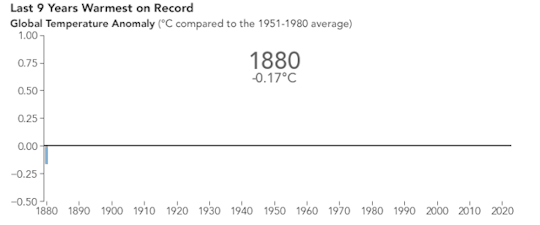
2022 Tied for Fifth Warmest Year on Record Earth’s average surface temperature in 2022 tied with 2015 as the fifth warmest on record, according to an analysis by NASA. Continuing the planet’s long-term warming trend, global temperatures in 2022 were 0.89 degrees Celsius (1.6 degrees Fahrenheit) above the average for NASA’s baseline period (1951–1980), according to scientists at NASA’s Goddard Institute for Space Studies (GISS). The past nine years have been the warmest years since modern recordkeeping began in 1880. This means Earth in 2022 was about 1.11°C (2°F) warmer than the late 19th century average. The map above depicts global temperature anomalies in 2022. It does not show absolute temperatures; instead, it shows how much warmer or cooler each region of Earth was compared to the average from 1951 to 1980. The bar chart below shows 2022 in context with temperature anomalies since 1880. The values represent surface temperatures averaged over the entire globe for the year. “The reason for the warming trend is that human activities continue to pump enormous amounts of greenhouse gases into the atmosphere, and the long-term planetary impacts will also continue,” said Gavin Schmidt, director of GISS, NASA’s leading center for climate modeling. Human-driven greenhouse gas emissions have rebounded following a short-lived dip in 2020 due to the COVID-19 pandemic. Recently, NASA scientists, as well as international scientists, determined carbon dioxide emissions were the highest on record in 2022. NASA also identified some super-emitters of methane—another powerful greenhouse gas—using the Earth Surface Mineral Dust Source Investigation (EMIT) instrument that launched to the International Space Station last year. The Arctic region continues to experience the strongest warming trends—close to four times the global average—according to GISS research presented at the 2022 annual meeting of the American Geophysical Union, as well as a separate study. Communities around the world are experiencing impacts scientists see as connected to the warming atmosphere and ocean. Climate change has intensified rainfall and tropical storms, deepened the severity of droughts, and increased the impact of storm surges. Last year brought torrential monsoon rains that devastated Pakistan and a persistent megadrought in the U.S. Southwest. In September, Hurricane Ian became one of the strongest and costliest hurricanes to strike the continental U.S. NASA’s global temperature analysis is drawn from data collected by weather stations and Antarctic research stations, as well as instruments mounted on ships and ocean buoys. NASA scientists analyze these measurements to account for uncertainties in the data and to maintain consistent methods for calculating global average surface temperature differences for every year. These ground-based measurements of surface temperature are consistent with satellite data collected since 2002 by the Atmospheric Infrared Sounder on NASA’s Aqua satellite and with other estimates. NASA uses the period from 1951–1980 as a baseline to understand how global temperatures change over time. That baseline includes climate patterns such as La Niña and El Niño, as well as unusually hot or cold years due to other factors, ensuring it encompasses natural variations in Earth’s temperature. Many factors can affect the average temperature in any given year. For example, 2022 was one of the warmest on record despite a third consecutive year of La Niña conditions in the tropical Pacific Ocean. NASA scientists estimate that La Niña’s cooling influence may have lowered global temperatures slightly (about 0.06°C or 0.11°F) from what the average would have been under more typical ocean conditions. A separate, independent analysis by the National Oceanic and Atmospheric Administration (NOAA) concluded that the global surface temperature for 2022 was the sixth highest since 1880. NOAA scientists use much of the same raw temperature data in their analysis and have a different baseline period (1901–2000) and methodology. Although rankings for specific years can differ slightly between the records, they are in broad agreement and both reflect ongoing long-term warming. NASA’s full dataset of global surface temperatures through 2022, as well as full details with code of how NASA scientists conducted the analysis, are publicly available from GISS. NASA Earth Observatory images by Joshua Stevens, based on data from the NASA Goddard Institute for Space Studies. Video by NASA’s Goddard Space Flight Center/Kathleen Gaeta.
2 notes
·
View notes
Text
Events 4.10 (after 1920)
1925 – The Great Gatsby by F. Scott Fitzgerald is first published in New York City, by Charles Scribner's Sons.
1938 – The 1938 German parliamentary election and referendum seeks approval for a single list of Nazi candidates and the recent annexation of Austria.
1939 – Alcoholics Anonymous, A.A.'s "Big Book", is first published.
1941 – World War II: The Axis powers establish the Independent State of Croatia.
1944 – Rudolf Vrba and Alfréd Wetzler escape from Birkenau death camp.
1963 – One hundred twenty-nine American sailors die when the submarine USS Thresher sinks at sea.
1968 – The TEV Wahine, a New Zealand ferry sinks in Wellington harbour due to a fierce storm – the strongest winds ever in Wellington. Out of the 734 people on board, fifty-three died.
1970 – Paul McCartney announces that he is leaving The Beatles for personal and professional reasons.
1971 – Ping-pong diplomacy: In an attempt to thaw relations with the United States, China hosts the U.S. table tennis team for a week-long visit.
1972 – Tombs containing bamboo slips, among them Sun Tzu's Art of War and Sun Bin's lost military treatise, are discovered by construction workers in Shandong.
1972 – Vietnam War: For the first time since November 1967, American B-52 bombers reportedly begin bombing North Vietnam.
1973 – Invicta International Airlines Flight 435 crashes in a snowstorm on approach to Basel, Switzerland, killing 108 people.
1979 – Red River Valley tornado outbreak: A tornado lands in Wichita Falls, Texas killing 42 people.
1988 – The Ojhri Camp explosion kills or injures more than 1,000 people in Rawalpindi and Islamabad, Pakistan.
1991 – Italian ferry MS Moby Prince collides with an oil tanker in dense fog off Livorno, Italy, killing 140.
1991 – A rare tropical storm develops in the South Atlantic Ocean near Angola; the first to be documented by satellites.
1998 – The Good Friday Agreement is signed in Northern Ireland.
2009 – President of Fiji Ratu Josefa Iloilo announces the abrogation of the constitution and assumes all governance in the country, creating a constitutional crisis.
2010 – Polish Air Force Tu-154M crashes near Smolensk, Russia, killing 96 people, including Polish President Lech Kaczyński, his wife, and dozens of other senior officials and dignitaries.
2016 – The Paravur temple accident in which a devastating fire caused by the explosion of firecrackers stored for Vishu, kills more than one hundred people out of the thousands gathered for seventh day of Bhadrakali worship.
2016 – An earthquake of 6.6 magnitude strikes 39 km west-southwest of Ashkasham, impacting India, Afghanistan, Tajikistan, Srinagar and Pakistan.
2019 – Scientists from the Event Horizon Telescope project announce the first ever image of a black hole, which was located in the centre of the M87 galaxy.
2023 – A mass shooting occurs at the Old National Bank in Louisville, Kentucky that leaves five victims dead and eight wounded.
0 notes